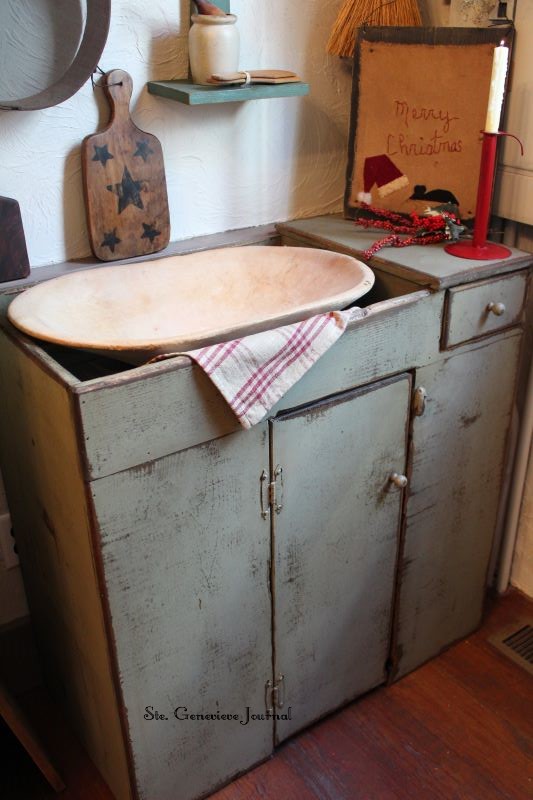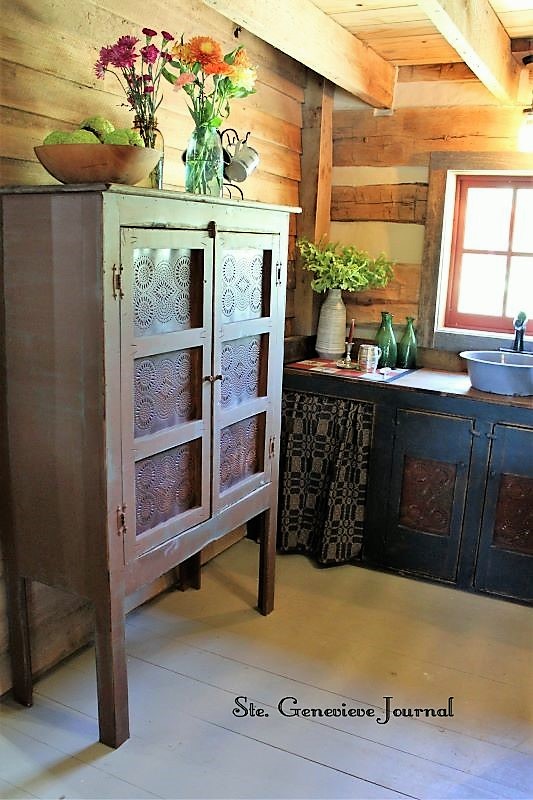Christmas came a little early in the kitchen. . .I had looked and looked for a dry sink that would fit the narrow corner opposite the stairs. . .Everything was too wide or too long. . .I had a small table filling the space for the moment but it lacked storage. . .and in this small house, we needed as much storage as possible. . .
The remedy? Call Dottie at WHITEHOUSE CREATIONS for a custom-made piece that fits the space perfectly. . .
Dottie is a genius at making their handmade furniture look vintage and well used. . .It is a talent that I have long envied. . .Right down to the mouse hole along the lower door, if you didn't know better, you would think this dry sink had been used for years and years. . .
I simply love it with the 1800s mustard color cupboard. . .I chose a gray finish for the dry sink for contrast. . .People in the 19th century weren't sticklers in their furniture matching. . .and it brought more color to their life. . .I wasn't sure I would enjoy non-matching pieces. . .but I truly do. . .
With a prim Merry Christmas board on the dry sink. . .a wreath and candle on the cupboard. . .that corner of the kitchen is ready for the holidays. . .The lack of more decorations is intentional. . .Pioneers had little and decorated only in what they could find or make. . .There are times when simple is best. . .
Many thanks to Dottie for making one corner in our kitchen stand out in 19th century fashion.
And from John and me and Mr. BJ LaShay (who thinks he owns the Heil House). . .
A VERY MERRY CHRISTMAS TO YOU AND YOUR FAMILY. . .
MAY THE NEW YEAR BRING YOU NOTHING BUT BLESSINGS. . .















































